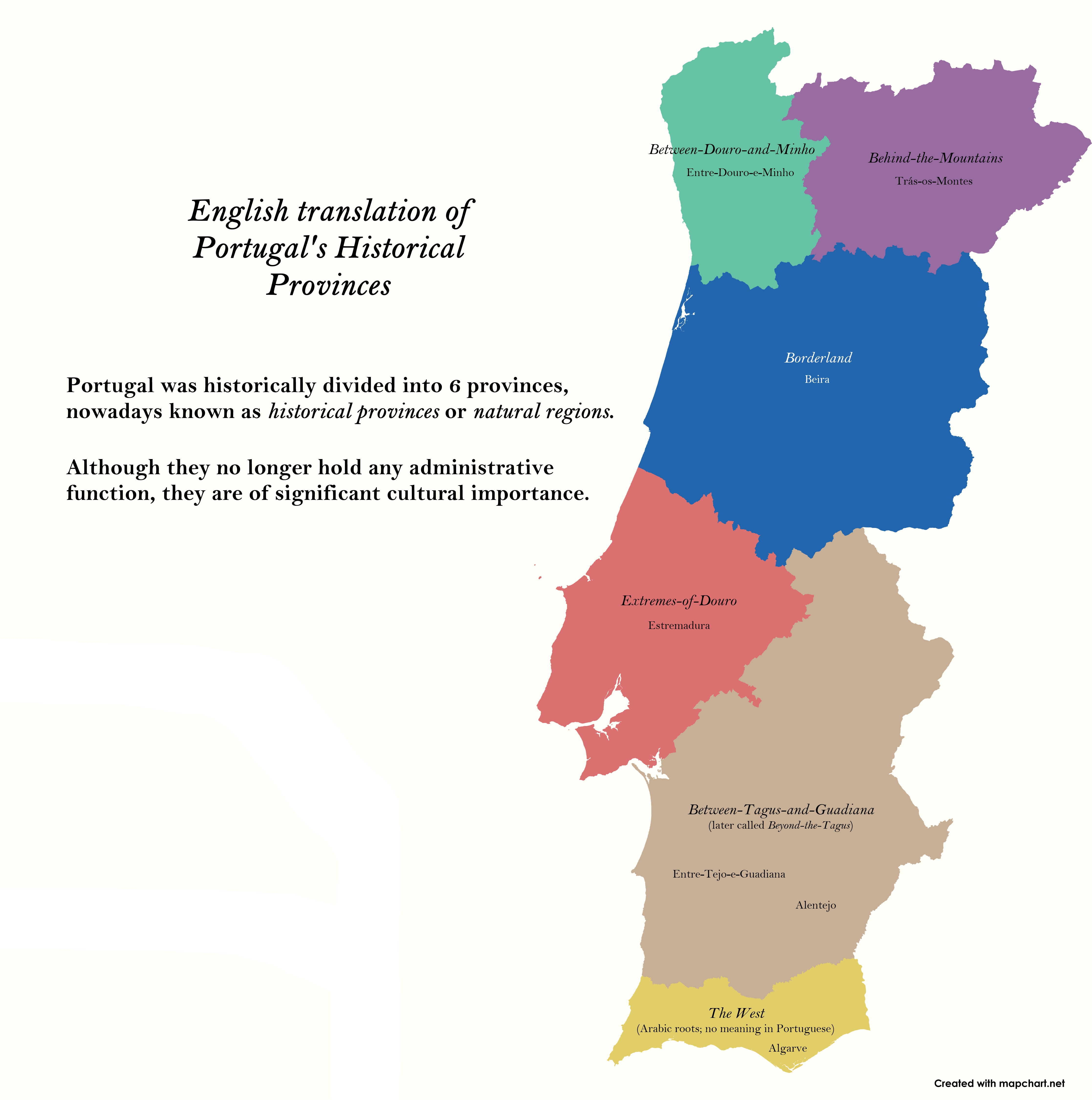Map of Portugal's Historical Provinces


Marcus Rodriguez
Historical Geography Expert
Marcus Rodriguez specializes in historical cartography and geographic data analysis. With a background in both history and geography, he brings unique...
Geographic Analysis
What This Map Shows
This map provides a detailed visualization of Portugal's historical provinces, highlighting the distinct regions that have shaped the nation's cultural and administrative landscape over the centuries. Each province showcases unique characteristics and historical significance, revealing how geographical boundaries have influenced the development of identity and governance in Portugal.
As we delve deeper into the topic, it's important to understand that these provinces are not merely administrative divisions but are steeped in history, culture, and tradition, reflecting the evolution of Portuguese society from the medieval period to the modern day.
Deep Dive into Portugal's Historical Provinces
Portugal is rich in historical provinces, each with its own unique story. Originally, the country was divided into provinces that were established in the 19th century. However, the roots of these regions stretch back to earlier periods, such as the Roman and Moorish influences that have left lasting imprints on the land and its people.
One of the most notable provinces is Estremadura, which includes the capital, Lisbon. This area was significant during the Age of Exploration, serving as a launch point for maritime voyages that led to the discovery of new worlds. The cultural and historical legacy of Estremadura is visible in its architecture, cuisine, and vibrant festivals that celebrate the region's rich heritage.
Moving north, we encounter the province of Minho, known for its lush landscapes and traditional Vinho Verde wine. The Minho region is characterized by a unique blend of agricultural practices and artisanal crafts, showcasing how geography influences local economies and lifestyles. Interestingly, Minho is often referred to as the birthplace of Portugal, as it was here that the nation began to take shape during the 12th century.
Another significant area is the province of Alentejo, which occupies much of southern Portugal. This region is marked by vast plains and rolling hills, offering a stark contrast to the coastal provinces. Alentejo is famous for its agricultural production, particularly olives and cork. The socio-economic dynamics in Alentejo highlight the importance of rural communities and their sustainable practices in contrast to urban centers.
Every province has its own dialect, cuisine, and traditions, underscoring the diversity within Portugal. For instance, the Azores and Madeira islands, though technically autonomous regions today, were historically tied to the mainland provinces, contributing to the maritime tradition of the country.
Regional Analysis
Let's break down the provinces further. In the northern part of Portugal, regions like Trás-os-Montes and Douro are known for their mountainous terrain and river valleys. The Douro River, for instance, is not just a geographic feature but a cultural icon, supporting the famous port wine industry that has been a crucial part of Portugal's economy.
In contrast, the central region's province of Beira offers a different landscape with its rugged mountains and rich historical sites. The regional variations in agriculture, from vineyards to dairy farming, showcase how the climate and topography influence local economies. Furthermore, the Beira province is home to some of the oldest towns in Portugal, reflecting the historical significance of the area.
On the other hand, the Algarve province in the south is characterized by its Mediterranean climate, which has made it a popular tourist destination. The economy here relies heavily on tourism, which has transformed the province into a bustling hub of activity. Interestingly, the Algarve's history of fishing and agriculture still plays a role in its cultural identity, as evidenced by local festivals and traditional markets.
Significance and Impact
Understanding the historical provinces of Portugal is crucial for several reasons. Firstly, it helps us appreciate the rich tapestry of Portuguese culture and identity. Each province contributes to the national narrative, and recognizing these distinctions fosters a deeper connection to the land and its people.
Moreover, these historical regions still influence contemporary politics and governance in Portugal. The remnants of provincial identities often surface in discussions about regional autonomy and resource allocation. As the country continues to evolve, the balance between honoring historical identities and fostering national unity remains a topic of conversation.
In recent years, there has been a growing trend towards the revitalization of local cultures and economies. Efforts to promote tourism in less-known provinces are gaining traction, ensuring that the rich histories of regions like Trás-os-Montes and Alentejo are not lost to modernity. As we look to the future, the interplay between historical significance and economic development will shape the narrative of Portugal for generations to come.
Visualization Details
- Published
- August 8, 2025
- Views
- 148
Comments
Loading comments...